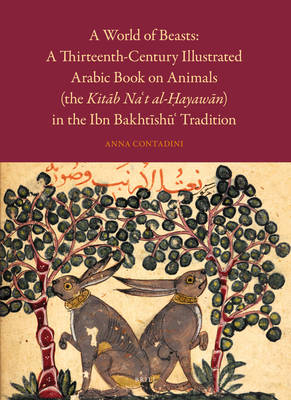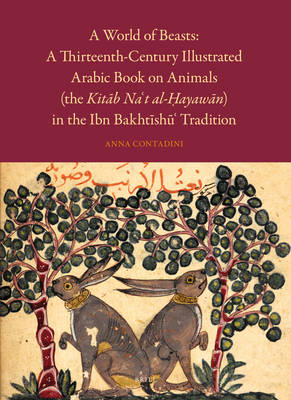
Door een staking bij bpost kan je online bestelling op dit moment iets langer onderweg zijn dan voorzien. Dringend iets nodig? Onze winkels ontvangen jou met open armen!
- Afhalen na 1 uur in een winkel met voorraad
- Gratis thuislevering in België vanaf € 30
- Ruim aanbod met 7 miljoen producten
Door een staking bij bpost kan je online bestelling op dit moment iets langer onderweg zijn dan voorzien. Dringend iets nodig? Onze winkels ontvangen jou met open armen!
- Afhalen na 1 uur in een winkel met voorraad
- Gratis thuislevering in België vanaf € 30
- Ruim aanbod met 7 miljoen producten
Zoeken
A World of Beasts: A Thirteenth-Century Illustrated Arabic Book on Animals (the Kitāb Na't Al-Ḥayawān) in the Ibn Bakhtīshū' Tradition
Anna Contadini
Hardcover | Engels
€ 121,41
+ 242 punten
Omschrijving
The Kitāb Naʿt al-Ḥayawān is the earliest of a group of illustrated manuscripts dealing with the characteristics of animals and their medicinal uses. The present study considers both the confluence of textual traditions within this work and the stylistic and iconographic relationships of its illustrations, which make it a key witness to early thirteenth-century Arab painting. After a re-evaluation of previous approaches, emphasis is placed on relating image to text, on stylistic affiliations, and on the modalities of production, supported by technical analyses undertaken for the first time. In elucidating the particular context of this unique manuscript, the study contributes to our understanding of a critical period in the development of Middle Eastern painting and art.
Specificaties
Betrokkenen
- Auteur(s):
- Uitgeverij:
Inhoud
- Aantal bladzijden:
- 280
- Taal:
- Engels
Eigenschappen
- Productcode (EAN):
- 9789004201002
- Verschijningsdatum:
- 11/11/2011
- Uitvoering:
- Hardcover
- Formaat:
- Genaaid
- Afmetingen:
- 213 mm x 295 mm
- Gewicht:
- 1197 g

Alleen bij Standaard Boekhandel
+ 242 punten op je klantenkaart van Standaard Boekhandel
Beoordelingen
We publiceren alleen reviews die voldoen aan de voorwaarden voor reviews. Bekijk onze voorwaarden voor reviews.











